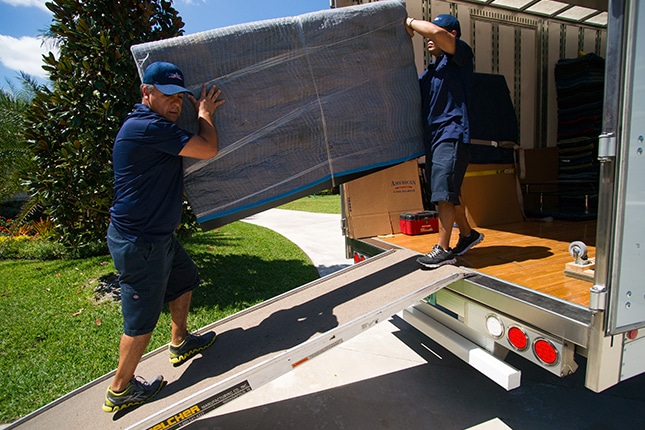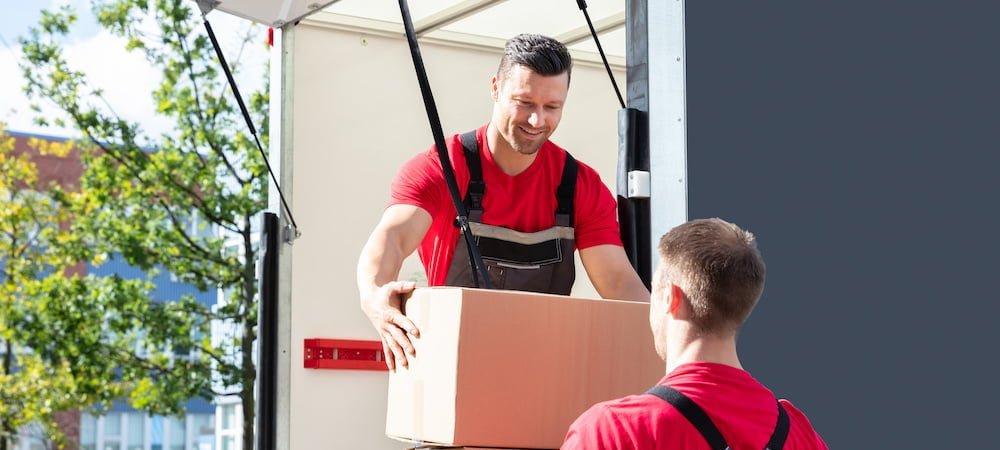Student Movers: In what way Moving Companies Help Long Distance Moving Simpler
Movers For Gym Equipment: Specialist Relocation Specialists Can Help Make Your Transition Smooth And Hassle-free
History and Advancement of Moving Services
The Dawn of Moving: From Muscle to Devices
Image this: a handful of strong guys carrying heavy trunks on wooden carts, browsing cobblestone streets with sweat and determination. Before the modern moving market took shape, moving was a harsh, labor-intensive job. In ancient times, relocation often suggested counting on large physical strength and rudimentary tools. The absence of specialized services implied households and merchants needed to coordinate every detail themselves, typically risking damage or loss.
Isn't it remarkable how necessity fuels innovation? As cities broadened and commerce grew, the requirement for efficient, trustworthy moving options ended up being glaringly apparent. Enter the age of horse-drawn wagons and later on, motorized cars, which changed how valuables took a trip from one location to another.
Industrial Revolution: The Catalyst for Change
The 19th century's commercial boom reshaped lots of facets of life, consisting of how individuals moved. Unexpectedly, urban migration surged, and with it, the demand for professional movers escalated. No longer was moving a simple task; it developed into a customized service offering:
- Packing proficiency to secure fragile products
- Organized filling methods taking full advantage of area
- Transportation options customized to different distances
This period marked the birth of business dedicated solely to moving, laying the groundwork for today's complex logistics and customer-centric approaches.
Technological Advancements and Their Impact
Can you envision moving without contemporary equipment? The advent of hydraulic lifts, forklifts, and pallet jacks transformed the market over night. Unexpectedly, movers could deal with large furnishings and heavy devices with ease, decreasing injuries and improving performance.
The combination of digital innovation triggered a brand-new wave of innovation. GPS tracking, online reservation platforms, and real-time stock management have actually ended up being staples in the moving services landscape. These tools not only improve transparency but also empower clients to stay linked and notified throughout their moving journey.
Key Turning Points in Moving Solutions Evolution
| Period | Development | Significance |
|---|---|---|
| Ancient Times | Manual work and fundamental carts | Structure of moving as a requirement |
| 19th Century | Horse-drawn wagons and packing services | Birth of expert moving business |
| 20th Century | Motorized trucks and mechanized equipment | Increased performance and scale |
| 21st Century | Digital combination and GPS technology | Enhanced customer experience and logistics |
Reflections on the Journey
Reflecting on the advancement of movers, one might wonder: how did a basic act of carrying possessions end up being a sophisticated industry? It's a tale of resilience, adjustment, and continuous enhancement. From the sweat-soaked streets of old to the precision-driven operations of today, the history of moving services is as dynamic as the people who depend on them.
Next time you load a box or employ a mover, think about the layers of history ingrained in every step. The journey of movers encapsulates human ingenuity, transforming what was when an overwhelming job into a smooth experience.
Checking out the Spectrum of Moving Services
When the time comes to move your life from one address to another, the series of moving services readily available can feel like browsing a maze. Do you need an easy loading and discharging crew, or does your move demand the finesse of full packing and unpacking? Comprehending the subtleties can save hours of frustration and unforeseen costs.
Typical Kinds Of Moving Services
- Regional Relocations: Created for relocations within a city or city, these services usually run on a per hour basis, perfect for short distances.
- Long-Distance Moves: Covering moves beyond 100 miles, these require more coordination, from logistical planning to protect transportation, typically priced by weight and distance.
- Full-Service Moves: Movers manage whatever-- packing, packing, carrying, unloading, and often even unloading. Perfect for those pushed for time or energy.
- Self-Service Moves: You load and pack your valuables, while the company deals with transportation and dumping. A happy medium offering cost savings and some benefit.
- Specialty Relocations: For vulnerable, bulky, or valuable items like pianos, antiques, or artwork, requiring specialized equipment and know-how.
Professional Tips to Browse Your Moving Service Choices
- Prioritize Versatility: Choose a service that adapts to unanticipated delays or last-minute changes-- rigid schedules can turn a smooth move into a logistical nightmare.
- Inspect Insurance Options: Not all moving companies offer the same level of protection. Comprehending your coverage can prevent distress if something goes awry.
- Demand Comprehensive Inventories: A precise product list prevents disagreements and ensures accountability, especially when handling long-distance or specialty relocations.
- Consider Time of Year: Seasonal need can affect availability and prices. Early reserving during off-peak seasons might give better service and versatility.
- Inquire About Packing Materials: Top quality boxes, bubble wrap, and cushioning can be the difference between a scratched treasure and a pristine arrival.
Table: Service Characteristic Compared
| Service Type | Who Packs? | Transport Mode | Common Prices Design | Ideal For |
|---|---|---|---|---|
| Regional Move | Consumer or Movers | Truck | Hourly | Short ranges, small loads |
| Long-Distance Move | Movers | Truck or Container | Weight & & Range | Cross-state or local relocation |
| Full-Service Move | Movers | Truck | Flat or Weight-Based | Time-sensitive, high-stress moves |
| Self-Service Move | Customer | Truck or Container | Flat or Per hour | Cost-conscious, hands-on movers |
| Specialized Move | Movers with expertise | Specialized Equipment | Custom Quote | Fragile or important products |
The Unseen Complexity Behind Each Choice
Have you ever wondered why moving seems effortless on tv but becomes a cascade of last-minute choices in real life? The fact depends on the click here intricacies of each service type. For example, full-service moves might look like a high-end, but the proficiency included in packaging fragile treasures or taking apart large furnishings is a craft sharpened over years. On the other hand, choosing a self-service relocation might conserve money, however it demands a keen understanding of how to pack effectively-- did you know that stacking oddly shaped boxes improperly can trigger internal shifting during transit, wrecking fragile contents?
Picking the right kind of moving service is not almost benefit-- it's about safeguarding your memories and investments. What's your relocation's story going to be?

Packing and Moving Strategies
Ever tried to fit a luggage that just will not close? That's the sort of puzzle expert movers fix daily-- however on a much bigger scale. The secret lies not in brute force however in tactical positioning and intelligent usage of space. Packing isn't simply about stuffing products into boxes; it's an art kind where every inch counts.
Layering for Success
Envision a painter layering colors to develop depth. When packing, begin with heavier products at the bottom, then cushion with softer materials like bubble wrap or towels. This avoids damage and maximizes box stability. Strangely formed products can slip into gaps, minimizing wasted space.
- Wrap vulnerable products separately with tissue or foam to prevent scratches.
- Use clothing as padding-- it's both efficient and environmentally friendly.
- Fill empty spaces with packaging peanuts or crumpled paper to lessen movement.
Identifying: The Unsung Hero

What great is ideal packaging if you spend hours searching through boxes? Detailed labeling is a game-changer. Instead of unclear tags like "Kitchen," try this method:
| Label | Description | Concern |
|---|---|---|
| Vulnerable - Glasses | Manage with care, consists of fragile items | High |
| Essentials - First Night | Items needed instantly after moving | Urgent |
| Books - Study Room | Stacked, heavy books | Medium |
Strategic Packaging Tips
- Take apart big furniture and keep screws in labeled bags taped to the pieces.
- Use uniform box sizes when possible-- stacking becomes simpler and much safer.
- Do not overpack boxes; weight limitations exist for a reason. Objective for 40-50 pounds max.
- Wrap furnishings edges with moving blankets to avoid scratches during transit.
- Seal boxes with premium packing tape-- double layers on the bottom are essential.
Why do some movers swear by a color-coded system? Since it gets rid of guesswork on moving day. Assign each space a color and mark boxes accordingly. This small step can conserve hours when dumping and unloading.
Packing and moving demand accuracy-- like a chess video game where every move counts. Have you ever noticed how some movers handle large items effortlessly? They take advantage of angles and pivot indicate browse tight corners without damage. It's not muscle; it's technique.
Unseen Struggles Behind the Moving Van Doors
Ever watched a group of professional movers bring a grand piano through a narrow entrance and questioned how they pull it off without a scratch? The art of moving isn't simply muscle and trucks; it's a fragile dance with unpredictability. Weather can turn from a sunlit blessing to a torrential threat in minutes, turning a straightforward drive into a logistical labyrinth.
One infamous difficulty is the labyrinthine layout of some homes or apartment or condos. Staircases too tight for dollies, entrances narrower than basic boxes, or elevators that hardly fit a sofa-- these physical quirks require innovative solutions on the spot. Movers typically turn to non-traditional techniques like dismantling furniture or utilizing tailor-made padding to secure both the item and the residential or commercial property.
Accuracy Packaging: More Than Just Covering
It's tempting to believe packaging is merely stuffing boxes, but the reality is a complex puzzle of weight distribution and fragility. Movers should expect how products will move during transit-- a miscalculation can imply shattered treasures or dented appliances. The ace in the hole? Strategic layering and utilizing products with specific shock-absorbing qualities.
- Bubble wrap is standard, but alternating it with foam sheets can dramatically minimize effect damage.
- Heavy products go at the bottom; vulnerable ones nestle on top, cushioned by soft textiles.
- Labeling boxes not simply by contents however by dealing with guidelines ensures quicker, much safer discharging.
Another less discussed stress is the mental toll. The clock ticks non-stop, and every delay ripples through tight schedules. Staying calm amid chaotic last-minute modifications needs imagination and team synergy.
Traffic Jams and Timing: The Unnoticeable Opponents
| Challenge | Specialist Technique | Impact |
|---|---|---|
| Urban blockage | Path optimization apps and versatile scheduling | Decreases hold-ups and fuel intake |
| Parking constraints | Pre-arranged licenses or tactical parking close by | Prevents fines and time loss |
| Unpredictable weather condition | Waterproof coverings and contingency strategies | Preserves the condition of goods and equipment |
Do you truly understand what it requires to keep a moving day on track? It's not practically strength or endurance; it's about foresight, versatility, and a deep understanding of every piece of the puzzle. The next time you see movers at work, remember: behind that smooth operation lies a series of computed maneuvers and fast thinking that few ever notice.